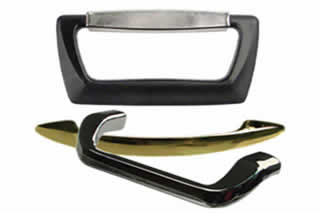
Handles are used to move an object or workpiece by hand. They are designed with a focus on ergonomics. Since they require manual hand-based operation — as opposed to automated tool-based operation — handles must be designed to comfortably fit and support a person’s hand. When researching handles, however, you may come across pull handles. What are pull handles exactly, and what makes them different from other types of handles?
The Basics of Pull Handles
A pull handle is a type of handle that, as the name suggests, supports a pulling action. You can grip a pull handle with one or both hands, after which you can pull it. Pulling a pull handle will then move the object or workpiece to which it’s connected.
A common example is a drawer handle. Cabinets are often designed with a pull handle for each of their respective drawers. You can open a drawer by gripping and pulling its pull handle. Pushing the drawer, of course, will close it.
Pull handles can support both vertical and horizontal pulling actions. Horizontal pulling action occurs when you pull the connected object or workpiece horizontally towards your body, whereas vertical pulling action occurs when you pull the connected object or workpiece vertically up towards your body.
Pull Handle Features
Pull handles are available with a variety of features. Some of them are load rated, for instance. Load-rated pull handles are designed specifically to support a minimum amount of weight, making them ideal for material handling applications. There are also antimicrobial pull handles. Antimicrobial pull handles are designed to neutralize or slow the spread of microorganisms, such as bacteria, viruses and mold.
Pull handles can support different methods of installation. Some of them contain “through holes,” for instance, for screws or bolts. To install them, you must drive a fastener into these holes as well as the underlying object or workpiece. Other pull handles require welding for installation. Known as weld-on pull handles, they are installed using heat rather than fasteners.
Pull vs Twisting Handles: What’s the Difference?
There are also twisting handles. Twisting handles work differently than pull handles. A twisting handle consists of a lever that rotates along an axis. Rather than using standard doorknobs, many modern homes and buildings are now constructed with twisting handle doors. The doors feature a lever that, when pushed down, opens. Twisting handles aren’t designed to be pulled. Rather, they only respond to a downwards pushing action.
